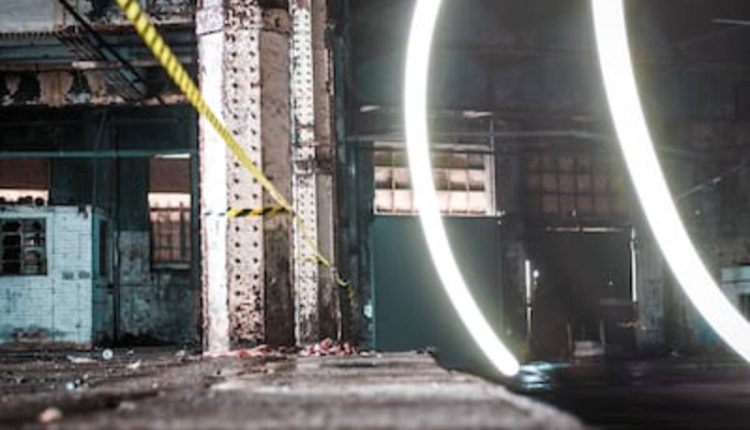Warehouse lighting can serve multiple functions. It can help prevent work-related incidents like falls, injuries, and equipment failure from happening and reduce eye strain and fatigue among occupants. The Interesting Info about high efficiency warehouse lighting.
Warehouse lighting should produce an illumination pattern that complements the layout of your facility. For instance, if aisles are narrow and shelving high up on walls, long, skinny lights are recommended to illuminate them appropriately.
Lighting Design
Warehouses must be lit brightly enough for employees to move safely about. With numerous functions ranging from shipping and receiving to light assembly and office work, lighting levels may differ significantly depending on which aspect of warehouse operations occurs.
Lighting professionals can help your warehouse determine what type of illumination it requires based on tasks performed and its layout. As part of this analysis, a lighting specialist will look at ceiling height and any areas with wide-open floor spaces or tall shelving.
Color temperature should also be taken into consideration, as lighting can have a dramatic impact on productivity and eye strain. Studies have demonstrated that lighting temperatures between 3000K and 5000K are ideal for warehouse environments, producing more excellent white light, reducing eyestrain, and creating an optimal work environment. Other lighting solutions, such as low-pressure sodium or metal halide lamps, deliver warmer yellow colors for further consideration.
Lighting specialists consider a fixture’s beam angle when assessing how it will light the space it will illuminate, with broader beam angles ideal for larger areas and narrower beams suited for specific rooms like an entranceway. Furthermore, occupancy/daylight sensors could help control lighting costs by turning off or dimming lights when no one is around and increasing energy savings.
Color Temperature
When selecting light fixtures for your warehouse, you must consider the bulbs’ color temperature. This is because the light bulb hue is determined by its Kelvin temperature – lower numbers indicate warmer lighting, while higher ones produce whiter results.
The color temperature of light bulbs is measured in Kelvins and often referenced by four-digit numbers followed by “K.” While a wide range of temperatures exists, between 3000K and 5000K are considered neutral and comprise most commercial/industrial lighting due to their versatility.
As an example, a hotel lobby might use lighting with 3000K color temperature recessed cans or wall wash lights to achieve an enticing golden glow that attracts guests, while kitchens and prep areas would benefit more from using brighter 4000K or 5000K lights that feature blue tinting which promote alertness and productivity in employees.
Natural sunlight gradually shifts between 2000K and 10,000K throughout the day, making commercial and industrial lighting versatile between these ranges.
Light Distribution
No matter the warehouse type, light distribution is vital in lighting design. Warehouses with high ceilings require more lumen output and could benefit from using industrial-grade LED lights with various fixture types, configurations, and beam spreads available. Round high bay lights may offer broader area coverage than other light sources and make an excellent addition to giant warehouses, airport hangars, manufacturing plants, or amphitheaters as they have one contact point, making installation easier and faster.
Warehouses present many visual tasks that can be challenging without proper illumination, including reading labels on bins and shelves, sorting merchandise by hand or forklift, performing light assembly, labeling, paperwork entry, and keypad entries. Visibility requires adequate illumination, contrast, and color differences, as well as minimizing discomfort glare or overhead glare.
Lighting professionals recommend that occupied storage areas maintain at least 150 lux for optimal illuminance levels to meet OSHA guidelines and prevent injuries caused by HID lamps’ excessive heat output. Furthermore, having your lighting professionally installed by someone familiar with warehouse environments will help ensure compliance with regulations while optimizing your facility’s performance.
Fixture Spacing
For manufacturing or storage facilities, warehouse light fixtures must reflect your space’s layout, operating areas, windows, and ceiling height. Every warehouse requires a custom lighting solution that effectively illuminates its area of operations or storage.
An adequate lighting environment allows employees to read product labels and paperwork, which helps eliminate misspeaks and shipping errors and ensures safe movement for forklift operators and scissor lift drivers. Furthermore, adequate lighting reduces manual labor by preventing workers from bending down or using their hands as much.
When purchasing warehouse lights, you must consider how many bulbs will provide enough illumination across the workspace. You can do this by multiplying the total square footage of your workspace with its recommended lumens per square foot figure.
There are various lighting solutions designed to meet the illumination requirements of warehouses. Backlit flat panel LED lights with diffusers at the back can reduce glare effectively and are an efficient lighting choice, especially in warehouse environments. They come in various sizes and wattages to meet individual warehouse needs.
Read Also: Samsung Galaxy A41 Review


